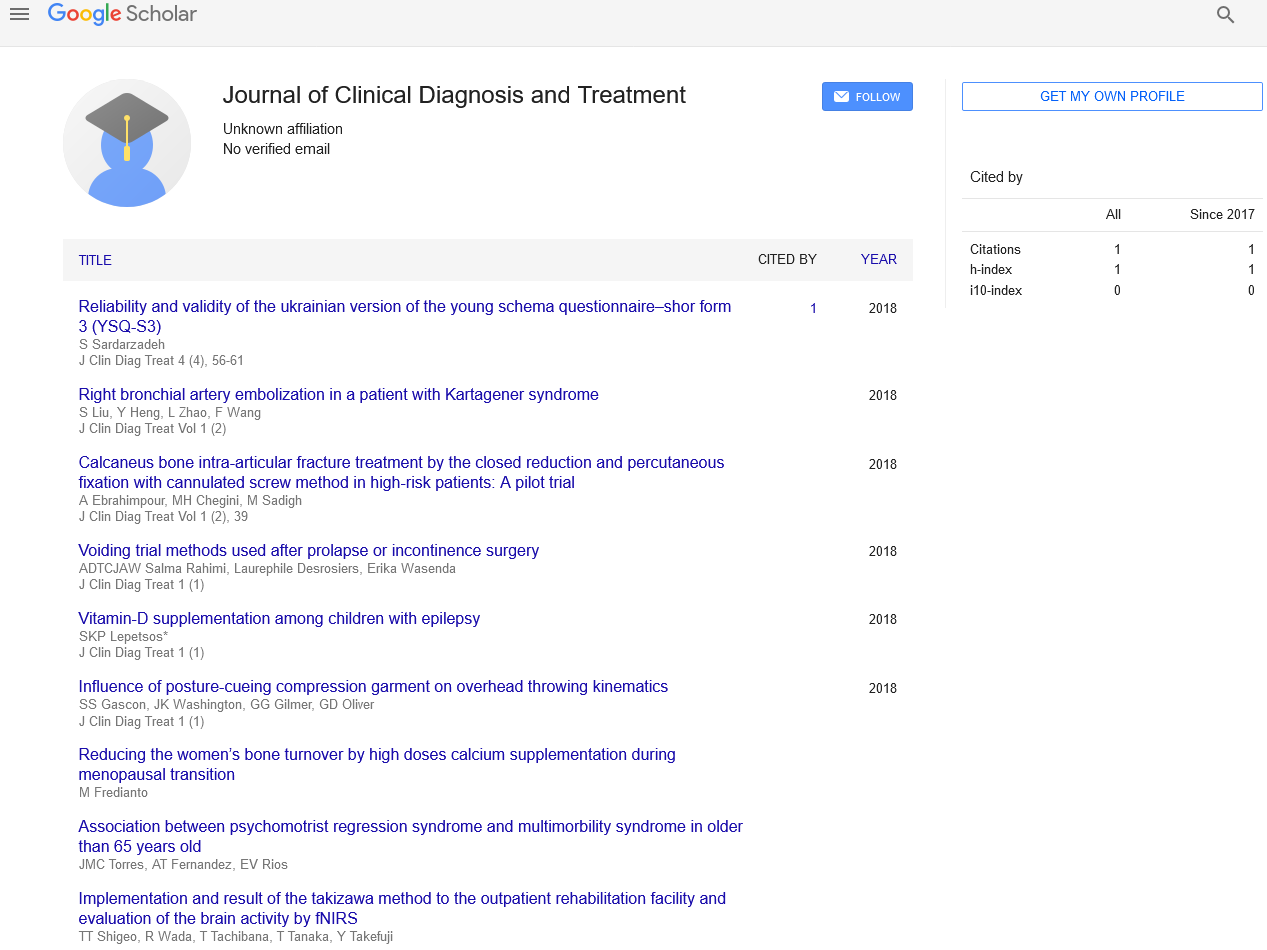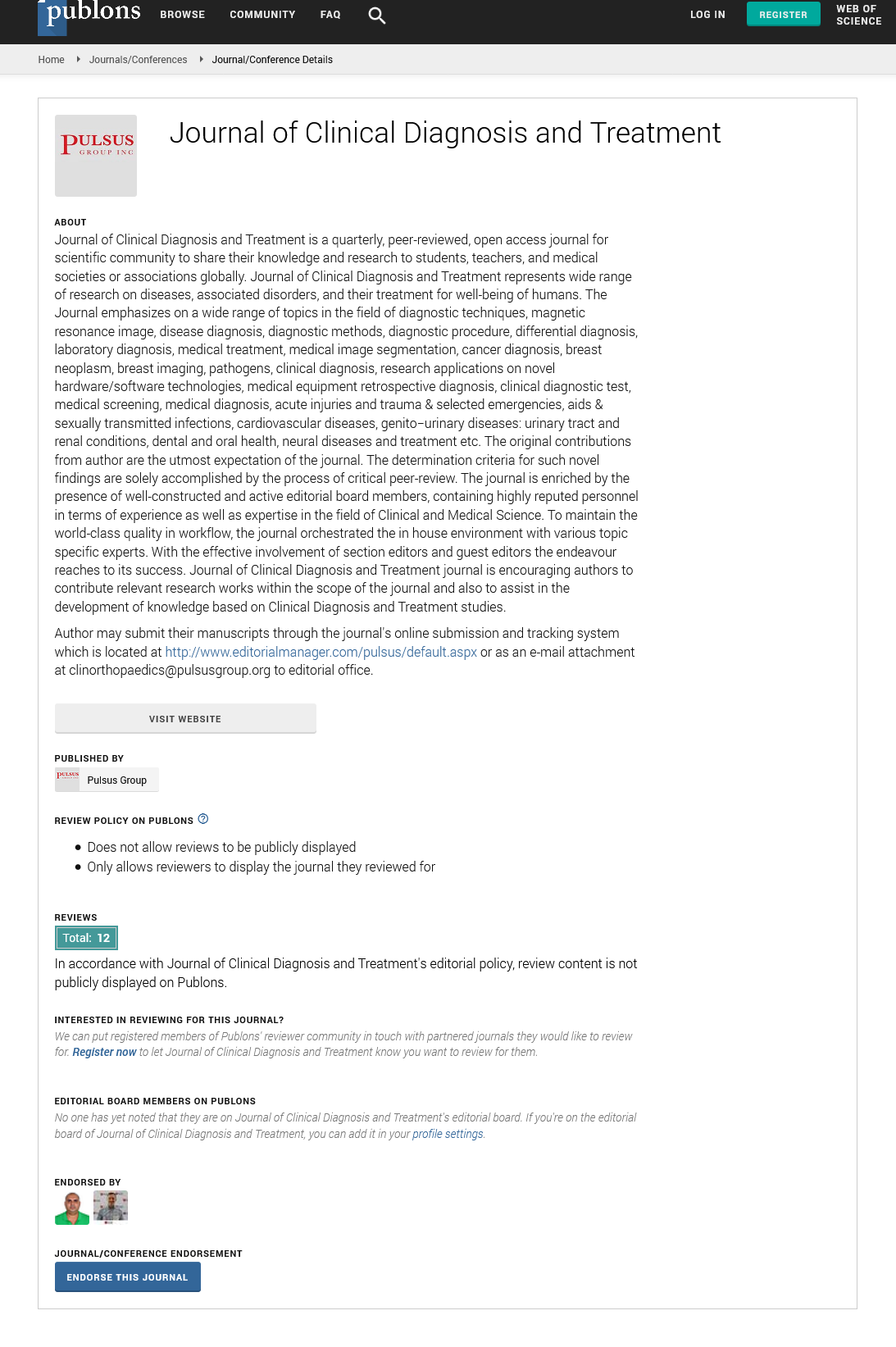Causes and risk factors for chronic lung diseases
Received: 03-Feb-2023, Manuscript No. puljcdt-22-5859; Editor assigned: 07-Feb-2023, Pre QC No. puljcdt-22-5859(PQ); Accepted Date: Feb 24, 2023; Reviewed: 15-Feb-2023 QC No. puljcdt-22-5859(Q); Revised: 21-Feb-2023, Manuscript No. puljcdt-22-5859(R); Published: 28-Mar-2023, DOI: 10.37532/ puljcdt.23.5(1).1-2
Citation: Melkani D., Causes and risk factors for chronic lung diseases J clin. diagn. Treat. 2023; 5(1):1-2
This open-access article is distributed under the terms of the Creative Commons Attribution Non-Commercial License (CC BY-NC) (http://creativecommons.org/licenses/by-nc/4.0/), which permits reuse, distribution and reproduction of the article, provided that the original work is properly cited and the reuse is restricted to noncommercial purposes. For commercial reuse, contact reprints@pulsus.com
Abstract
Along with sleep apnea and interstitial lung disease, chronic lung disease also includes Chronic Obstructive Pulmonary Disease (COPD). The third most common cause of death in the US (behind heart disease and malignant neoplasms) and a significant financial drain on the US economy is COPD, which is the focus of this report. The other chronic lung condition will share many of the same concerns with regard to COPD surveillance.
Key Words
Chronic obstructive, Pulmonary hypertension, Emphysema
Introduction
The lungs' airways and other skeletal and vascular components are impacted by Chronic Respiratory Diseases (CRDs). Asthma, occupational lung diseases, chronic Obstructive Pulmonary Disease (COPD), and pulmonary hypertension are some of the most prevalent [1].
Chronic obstructive pulmonary disease, or COPD, what is it?
The term "COPD" serves as a catch-all for several lung diseases that worsen over time. Emphysema and chronic bronchitis can both cause COPD. If you've been diagnosed with COPD, you may have signs of both of these lung-damaging conditions or just one of them. COPD can worsen gradually, making breathing more difficult over time. 2 of the most typical illnesses that cause COPD are emphysema and chronic bronchitis. People with COPD may experience either of these two conditions, and their severity can vary [2].
The bronchial tubes that transport air to and from the lungs' air sacs (alveoli) are inflamed in chronic bronchitis. Daily coughing fits and sputum production are its defining features. The bronchial tubes that carry air to and from your lungs become inflamed as a result of chronic bronchitis. In reaction, the tubes enlarge and mucus (also known as phlegm or "snot") accumulates along the lining. It becomes challenging to breathe in and out of your lungs because of the buildup, which reduces the tube's aperture.
Mucus is generally expelled from your airways by tiny, hair-like structures on the inside of your bronchial tubes, or cilia. However, they are harmed by the irritation brought on by smoking or chronic bronchitis. The mucus cannot be cleared by the compromised cilia. Emphysema is a condition where the alveoli at the end of the lungs' smallest air passages (bronchioles) are destroyed due to harmful exposure to tobacco smoke and other irritating gases and particulate matter. Emphysema is the breakdown of the walls of the tiny air sacs (alveoli) at the end of the bronchial tubes, in the "bottom" of your lung. Your lung resembles an upside-down tree. The leaves are the "alveoli," the branches are the "bronchi," and the trunk is the "trachea," or windpipe. The air sacs are essential for transferring oxygen into your blood and carbon dioxide out. Emphysema damage obliterates the walls of the air sacs, making it challenging to take a deep breath [3].
What sets COPD and asthma apart from one another?
Both asthma and COPD have several symptoms, such as breathing difficulties and airflow obstruction. COPD, however, progresses over time and is chronic. Allergens frequently cause asthma to flare up. Smoking is the primary cause of COPD. COPD does not always inevitably develop in people with asthma. Not everyone who has COPD also has asthma. Both of these respiratory issues, however, are possible. You must treat both if you have either one.
Symptoms
The signs and symptoms of COPD frequently don't manifest until serious lung damage has already occurred, and they typically get worse over time, especially if smoking exposure persists.
Examples of COPD symptoms and signs include:
• Breathing problems, particularly when exercising.
• Wheezing.
• Having a tight chest.
• A persistent cough that occasionally produces sputum that is clear, white, yellow, or greenish.
• Respiratory infections regularly.
• Energy deficit unwanted weight loss.
• Swelling of the legs, feet, or ankles.
Exacerbations, also known as flare-ups, are episodes that COPD sufferers are more likely to experience where their symptoms worsen than the typical day-to-day variation and last for at least a few days.
To determine how well your lungs function, providers of tests use a quick test called spirometry. You blow air into a tube that is attached to a device for this test.
Additional tests, such as the following, might also be requested by your provider:
• The oxygen level in your blood is measured using pulse oximetry
• An examination of your carbon dioxide and oxygen levels is done using arterial blood gas.
• A heart function test called an electrocardiogram can rule out heart disease as the source of breathlessness by examining the heart's activity
• An X-ray of the chest is used to detect lung changes brought on by COPD.
• Your doctor will use an exercise test to see if your blood's oxygen level falls during exercise.
Prevention
Contrary to some diseases, COPD typically has a clear cause, and a clear course of prevention, and there are ways to slow the disease's progression. The best way to prevent COPD is to never smoke since the majority of cases are directly related to cigarette smoking.
These straightforward statements might not seem straightforward if you've been a smoker for a long time, particularly if you've made multiple attempts to stop smoking in the past. But keep making an effort to stop. Finding a programme that can assist you in quitting smoking permanently is essential. Another risk factor for COPD is occupational exposure to chemical fumes and dust. Talk to your manager about the best ways to protect yourself if you work with these types of lung irritants [4-6].
References
- Schneider-Futschik EK. Chronic Lung and Respiratory Conditions Affecting Lungs and Airways. ACS Pharmacol. Transl. Sci. 2022;5(9):692-3.
- Kochanek KD, Xu J, Murphy SL, et al. Deaths: preliminary data for 2009. National Center for Health Statistics. 2011; 59(4):1-51.
- Rosalyn Phung SR, Rachel Wang SR, Haley Caldwell SR. Literature Review: Effect of a Motivational Interviewing-Based Health Coaching on Quality of Life in Subjects with COPD.
- Qaseem, A., Wilt, T.J., Weinberger, S.E., et al. Diagnosis and management of stable chronic obstructive pulmonary disease: a clinical practice guideline update from the American College of Physicians, American College of Chest Physicians, American Thoracic Society, and European Respiratory Society. Ann. intern. med. 155(3); 179-191.
- Lam MB. Insomnia-and its effects on student's life. 2019.
- Ramaswamy A, Puchalski J. Bronchoscopic lung volume reduction: recent updates. Journal of thoracic disease. 2018; 10(4):2519.






